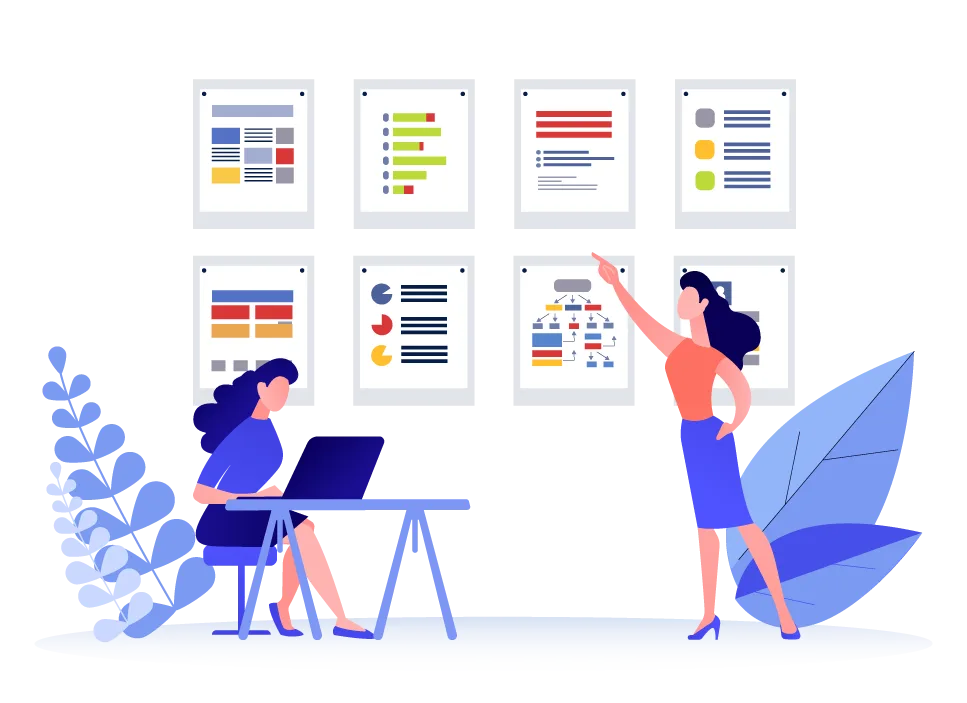In today’s fast-paced business environment, efficiency is more than a goal; it’s a necessity. Managers and HR professionals are constantly seeking ways to streamline operations to ensure their teams work cohesively, resources are well-managed, and goals are met on time. But how do you maintain control over complex structures and workflows?
Enter visualization tools like organizational charts (org charts) and HR Flow charts These simple yet powerful tools allow businesses to visualize their structure and processes, making it easier to manage resources, improve communication, and optimize workflows. In this guide, we’ll explore how org charts and HR flow charts can drive business efficiency, streamline operations, and ultimately boost your organization’s performance.
Understanding the Role of Visualization in Business
What Are Organizational Charts?
An organizational chart is a visual representation of the hierarchy and relationships within a company. It maps out roles, departments, and reporting structures, offering a snapshot of who’s responsible for what and how teams are connected.
Think of an org chart as the blueprint for your workforce. It not only defines your company’s internal structure but also serves as a critical tool for planning and communication. By having a clear, visual overview of your team’s makeup, you can allocate resources more effectively and ensure every employee understands their place in the business.
The Importance of HR Flow Charts
While org charts focus on people and structure, HR flow charts dive into processes. An HR flow chart outlines key HR processes—like recruitment, onboarding, performance management, and offboarding—step by step, ensuring that nothing gets missed along the way. These charts bring clarity to the most complex workflows, helping HR teams stay organized, efficient, and compliant.
In short, both org charts and HR flow charts provide visibility. They allow managers and HR professionals to see how their teams are structured and how processes unfold, leading to more informed decision-making.
Benefits of Using Org Charts and HR Flow Charts
Visualization tools like org charts and HR flow charts are more than just a way to present information—they’re a way to streamline operations across your entire organization. Let’s dive into the key benefits:
Streamlined Operations
At its core, streamlining operations means improving efficiency. By using org charts and HR flow charts, managers can:
- Avoid redundancy: Ensure that roles are well-defined and that no two employees are performing the same tasks.
- Optimize workflows: HR flow charts make it easy to spot bottlenecks in processes like recruitment or employee onboarding, allowing you to address issues before they escalate.
- Reduce errors: When your processes are clearly outlined in a flow chart, there’s less room for error. Everyone knows their responsibilities, and there’s a clear path to follow.
Improved Communication
One of the main challenges in large organizations is maintaining clear communication between teams. Org charts and HR flow charts can help with this by:
- Clarifying reporting lines: Org charts make it easy for employees to know who they should report to and who is responsible for key decisions.
- Facilitating collaboration: By seeing how teams are structured, employees can better understand which departments they need to collaborate with and how to coordinate their efforts.
Implementing Visualization Tools
Now that we’ve covered the benefits, how can you get started with org charts and HR flow charts? Follow these steps to integrate these visualization tools into your business effectively:
Steps to Create Effective Organizational Charts
- Define Your Structure: Start by mapping out your existing organizational structure. Identify key departments, leadership roles, and reporting lines. Use this as the foundation for your org chart.
- Use Software Tools: Organizational Chart Makers make it easy to create professional org charts without having to start from scratch. Drag-and-drop functionality allows you to adjust the structure as your team grows or evolves.
- Keep It Updated: Your org chart should evolve alongside your company. Whenever you make significant changes—like hiring a new executive or reorganizing departments—update the chart to reflect the current state.
Developing Comprehensive HR Flow Charts
- Identify Key HR Processes: Start by listing the critical processes you need to map, such as recruitment, onboarding, or performance reviews.
- Break It Down into Steps: For each process, outline every step involved. For example, recruitment may include job posting, candidate screening, interviews, and offer letters.
- Create the Flow Chart: Use visualization tools to create the flow chart, ensuring that every step and decision point is clearly marked. An HR flow chart maker can simplify this process with pre-built templates.
- Ensure Accessibility: Make sure your HR flow charts are accessible to the entire HR team and relevant stakeholders. Cloud-based tools can ensure that your charts are available in real-time, across departments.
Examples of Successful Implementation
Example 1: Streamlining Recruitment with HR Flow Charts
A growing tech company was struggling to manage its recruitment process. The HR team was overwhelmed, and the company experienced significant delays in hiring new talent. By introducing an HR flow chart that mapped out the recruitment process from job posting to onboarding, the company reduced its time-to-hire by 30%. Each HR team member had a clear understanding of their responsibilities, and workflows became far more efficient.
Example 2: Improving Team Collaboration with Org Charts
A marketing agency struggled with miscommunication between its creative and account management teams. By creating an organizational chart that visually outlined each team’s structure and reporting lines, the agency was able to improve communication between departments. The org chart allowed team members to understand who they should collaborate with on each project, leading to more efficient workflows and better project outcomes.
Conclusion
The power of visualization cannot be overstated when it comes to managing complex business operations. Org charts and HR flow charts are indispensable tools for managers looking to streamline operations, improve communication, and boost overall business efficiency.
By implementing these tools, businesses can gain greater clarity into their workforce structure and HR processes, ensuring that everyone—from employees to leadership—understands their role and responsibilities. Whether you’re focused on improving HR workflows or simply trying to enhance team collaboration, org charts and HR flow charts provide the structure and transparency needed to succeed.
Now is the time to embrace visualization tools and take your business operations to the next level.





Leave a Reply